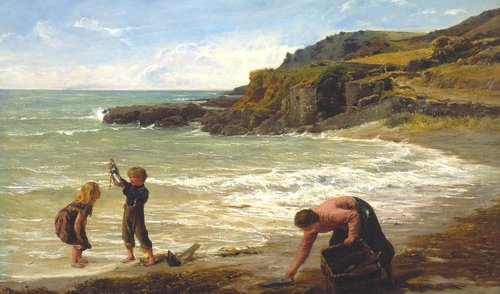Women as Telegraphists
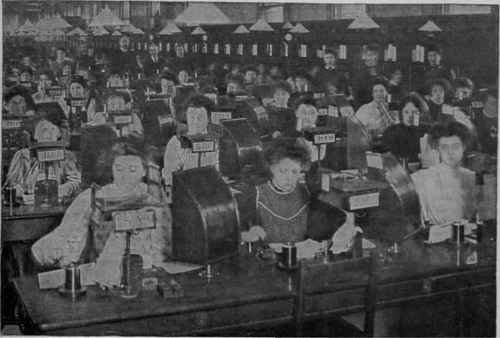
Victorian working-class women were - by definition - obliged to take employment. Many jobs were available to them in workshops, laundries, factories and the homes of the better off. Therefore to be a middle-class women was to be in a position where you did not need to take up work. If you wanted employment as a middle-class women (to pass the time until you married of course) it had to be improving, non-physical and safe. …
And the Winner is...
We are delighted to announce the winners of our GCSE/A-level Photography competition, which we ran to coincide with the Victorians Decoded exhibition. We were very impressed with the standard and variety of work we received and are sure you will agree that the winners have produced striking and thought-provoking images. We hope you enjoy them!
All our winners receive a goody bag (with thanks to Courtauld Institute of Art, King's College London English Department, …
Marion Richards: Victorians Decoded and A Childhood on the Seas
The ‘cable themes’ of ‘Victorians Decoded: Art and Telegraphy’ (Guildhall Art Gallery, 20 September 2016 – 22 January 2017), resonate deeply with my own maritime family history. My father, Colin Cameron (1922-1983), was for many years master of the Burmah Emerald, a Burmah Oil Company (BOC) tanker that transported oil from Iran and the former British colony of Aden (now South Yemen) to Pakistan, India, Ceylon (Sri Lanka), East Pakistan (Bangladesh) and Burma (Myanmar). My …
Victorians Decoded Photography Competition
Does photography form part of your GCSE or AS/A2 work? Does your photography convey ideas in imaginative and surprising ways? We are looking for entries from exciting young photographers!
***Deadline Extended: Closing date now 23:59:59pm (BST) on Friday 9th December 2016.***
On September 19th 2016 the exhibition Victorians Decoded: Art and Telegraphy opens at the Guildhall Art Gallery, London. The exhibition is the result of the research project Scrambled Messages: The Telegraphic Imaginary 1857-1900 run …
'The Great Grammatizator' wins message scrambling machine competition
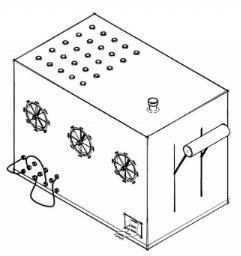 We are very pleased to announce that Alexandra Bridarolli has won the Scrambled Messages competition to design a message scrambling machine for our upcoming gallery exhibition Victorians Decoded. The challenge she won was to design and build an interactive messaging machine which interprets ‘telegraphy’ freely, and allows the public to take part in the exhibition. Competition was stiff with many great entries so every congratulations to Alexandra and her 'Great Gramatizator'. Read more about Alexandra's …
We are very pleased to announce that Alexandra Bridarolli has won the Scrambled Messages competition to design a message scrambling machine for our upcoming gallery exhibition Victorians Decoded. The challenge she won was to design and build an interactive messaging machine which interprets ‘telegraphy’ freely, and allows the public to take part in the exhibition. Competition was stiff with many great entries so every congratulations to Alexandra and her 'Great Gramatizator'. Read more about Alexandra's …
Fearfully Funny: Making Sense of Nonsense
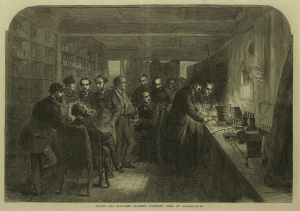 Charles Dodgson (who later took the pen name Lewis
Carroll) entertained a flight of fancy about teaching. He embarked on his academic career by tutoring
a pupil at Christ Church, Oxford. He understood
the tutor-student relationship to be one where the distance required for
authority and deference should be maintained and suggested that it could be
represented in the form of the game traditionally known as ‘Whisper Down the
Lane’ or (in the sinophobic designation) …
Charles Dodgson (who later took the pen name Lewis
Carroll) entertained a flight of fancy about teaching. He embarked on his academic career by tutoring
a pupil at Christ Church, Oxford. He understood
the tutor-student relationship to be one where the distance required for
authority and deference should be maintained and suggested that it could be
represented in the form of the game traditionally known as ‘Whisper Down the
Lane’ or (in the sinophobic designation) …
DUPLEX TELEGRAPHY I: HIROSHI SUGIMOTO
Duplex is simultaneous communication between two points in both directions. In terms of telegraphy this means sending messages along a single wire, both ways at once. This capability was developed over several decades, becoming a practical reality in the early 1870s. So that received messages could be understood, it was necessary for both parties to cancel out their own current using matching resistance, effectively silencing their own messages so that the line appeared free to …
DUPLEX II: JOHN RUSKIN AND SIMEON SOLOMON
Following the reading of Hiroshi Sugimoto’s work in terms of duplex telegraphy, our latest discussion considered the same technology in the context of John Ruskin’s lecture on ‘The Technics of Metal Engraving’ in Ariadne Florentina (1873). For Ruskin, engraving is purely linear: the engraver should not be overly (or at all) concerned with representing colour or light and shade, but line is key. This essential truth of engraving should be obvious from the first glance …
Duplex Telegraphy and the "double-speaking" poem
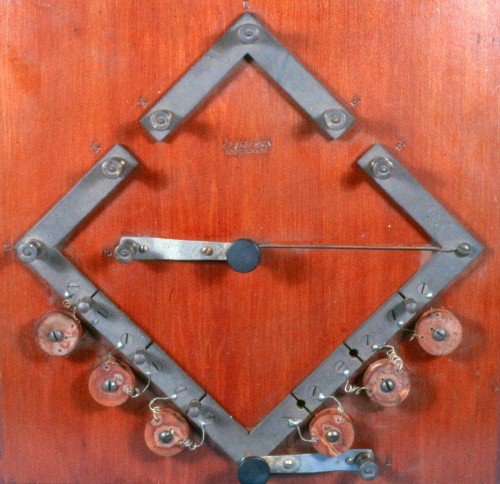 We had an absorbing project meeting on Duplex
Telegraphy on Monday. We read some
contemporary articles about the emergence of the duplex system which allowed
two messages to be sent over the same wire simultaneously. Cassie made a brilliant powerpoint presentation …
We had an absorbing project meeting on Duplex
Telegraphy on Monday. We read some
contemporary articles about the emergence of the duplex system which allowed
two messages to be sent over the same wire simultaneously. Cassie made a brilliant powerpoint presentation …
Henry James Tethered
Henry James's late novel, The Ambassadors (1903), is the transatlantic story of the middle-aged Strether who is sent to Paris to find out what exactly is going on with Mrs. Newsome's son, Chad, in that dangerously sophisticated city. What …
Telegraph Poles Keep Marching....
....over the horizon while soldiers lie dead and frozen, eaten by crows in Vasily Vereshchagin's huge (c.1.8m x 2.8m) oil painting, The Road of the War Prison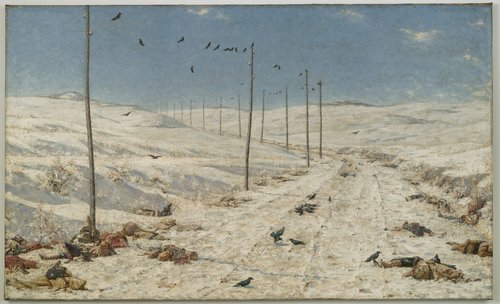
ers, painted in 1878–79. I saw this picture in April when I was in New York for a conference and it has haunted me ever since. The Russian artist Vereshchagin was working as a war-correspondent in the Russo-Turkish War. In the winter of 1877 he witnessed thousands …
Gerard Manley Hopkins and Newspaper Time
The Wre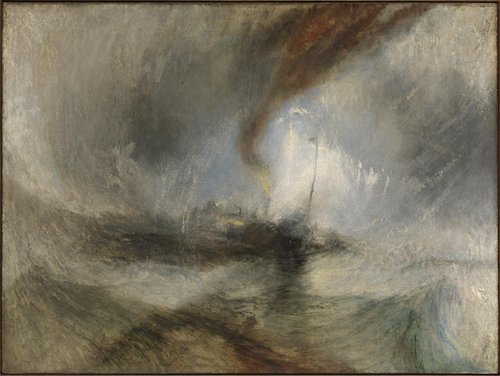 ck of Faith
ck of Faith
Is Gerard Manley Hopkins's The Wreck of the Deutschland “the first telegraphically conditioned poem in English”?[1] Walter Ong in this description is referring quite literally to the telegraphed Times reports of the shipwreck which …
Dots and Dashes: Sherlock Holmes and Coding
 In the 1890s, an accelerated
information culture was making efficient coding more and more urgently
necessary. Locating and identifying
individuals quickly in “so dense a swarm of humanity” (‘The Blue Carbuncle’) was
increasingly difficult.[i] Equally any form of message …
In the 1890s, an accelerated
information culture was making efficient coding more and more urgently
necessary. Locating and identifying
individuals quickly in “so dense a swarm of humanity” (‘The Blue Carbuncle’) was
increasingly difficult.[i] Equally any form of message …
William Morris’s poem ‘Error and Loss’ and Scrambled Messages
In William Morris’s verse poignant situations arise from failed connections, producing the intense sadnesses of love. He published ‘A Dark Wood’ in the Fortnightly Review in 1871 and included it under the title ‘Error and Loss’ in his final collection of poems Poems By the Way (1891). The poem includes just three actors: the melancholy narrator who sits on the ‘leaf-strewn’ grass at the edge of a wood in autumn, a tearful maiden who stops …
Archaeology: technology: telecommunications
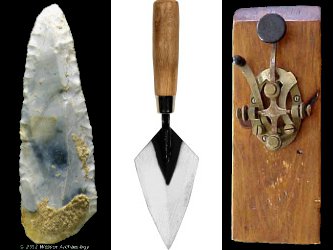
The time has finally come. I can put it off no longer. It is time to write up my thesis. It's tricky though, reading back over work that feels like a lifetime ago and trying to step back from all the fiddly detail that is thesis and thinking 'where is the book?' 'what's my big point?' and 'why would anyone read it?' (let alone buy it). It's ok for literary types, they can just bang …
Muddled Seriality
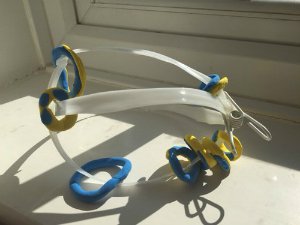 This is my model in air dough and extruded plastic of muddled seriality. I haven't had so much fun in ages. Probably since about 1970, in fact. I was one of the Scrambled Messages team who as asked to come up with a term from my own discipline that was difficult to communicate to other disciplines. I teach English Literature and a term that is exercising me in my own research and writing at the …
This is my model in air dough and extruded plastic of muddled seriality. I haven't had so much fun in ages. Probably since about 1970, in fact. I was one of the Scrambled Messages team who as asked to come up with a term from my own discipline that was difficult to communicate to other disciplines. I teach English Literature and a term that is exercising me in my own research and writing at the …
Natalie Hume: Failure Non-Event
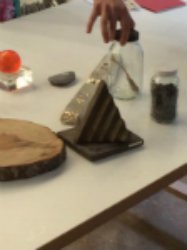 The Non-Event was a day exploring failures of various kinds, in
honour of the unsuccessful transatlantic telegraph cable-laying attempt
in 1865. Cassie and Anne had invited participants from a range of
different disciplines, and we were put in mixed teams before being asked
to carry out some unusual tasks, including a game requiring us to send
messages across the studio and the challenge of representing a
particular concept using objects that we had selected from …
The Non-Event was a day exploring failures of various kinds, in
honour of the unsuccessful transatlantic telegraph cable-laying attempt
in 1865. Cassie and Anne had invited participants from a range of
different disciplines, and we were put in mixed teams before being asked
to carry out some unusual tasks, including a game requiring us to send
messages across the studio and the challenge of representing a
particular concept using objects that we had selected from …
Jim Dixon: Serial Failure
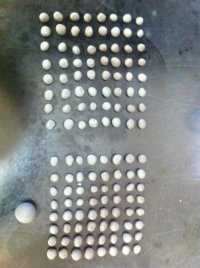 Scrambled Messages,
Day of Failure: Making session
Scrambled Messages,
Day of Failure: Making session
I liked very much Mark’s brief talk to us about the Institute of Making and the benefits of thinking-while-doing. It struck a chord with some of my own work into durational experiences of space. Tasked simply with ‘making’, I wanted to avoid trying to make a visual representation of anything we had discussed in the day so far and instead to use making to try to create some …
Carmel Raz: Failing Better
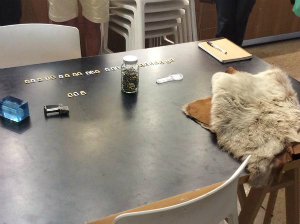 When I joined the Scrambled Messages team for “Failure: a Complete Nonevent” at the Institute of Making, I never expected failing to be so much fun. Whether it was coming in last in the telegraphic contest after our chopstick slingshot broke (mission: convey “Hence, heap of wrath, foul indigested lump” to the team at the far end of the room), depicting an electric field using found objects, or creating an air-dough model of said “field,” …
When I joined the Scrambled Messages team for “Failure: a Complete Nonevent” at the Institute of Making, I never expected failing to be so much fun. Whether it was coming in last in the telegraphic contest after our chopstick slingshot broke (mission: convey “Hence, heap of wrath, foul indigested lump” to the team at the far end of the room), depicting an electric field using found objects, or creating an air-dough model of said “field,” …
Eleanor Shipton: Failing Together
 I was lucky enough to be one of the MA students invited to the Scrambled Messages ‘Non-Event’ at UCL’s Institute of Making on Monday 13th July. I had absolutely no idea what to expect. The event certainly lived up to its expectations, with students - both MA and PhD - post-doctoral researchers and academics of different disciplines split into groups, performing tasks ranging from sending a message from one side of the Atlantic to the …
I was lucky enough to be one of the MA students invited to the Scrambled Messages ‘Non-Event’ at UCL’s Institute of Making on Monday 13th July. I had absolutely no idea what to expect. The event certainly lived up to its expectations, with students - both MA and PhD - post-doctoral researchers and academics of different disciplines split into groups, performing tasks ranging from sending a message from one side of the Atlantic to the …
Non-event in celebration of 150th Anniversary of the failure of the 1865 Atlantic telegraph cable
 At 10.30 on 31 July 1865 the third attempt to lay a trans-Atlantic submarine telegraph cable ended in abject failure. After 1250 miles of cable had been paid out, the cable snapped and was lost over the side. To commemorate this epic failure to communicate Scrambled Messages held a Complete Non-event at the Institute of Making, UCL on Monday 13 July. At the event failure was embraced, explored and discussed through making, thinking and talking. …
At 10.30 on 31 July 1865 the third attempt to lay a trans-Atlantic submarine telegraph cable ended in abject failure. After 1250 miles of cable had been paid out, the cable snapped and was lost over the side. To commemorate this epic failure to communicate Scrambled Messages held a Complete Non-event at the Institute of Making, UCL on Monday 13 July. At the event failure was embraced, explored and discussed through making, thinking and talking. …
Dots and Dashes: The Way We Live Now
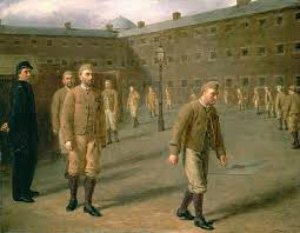 Anthony Trollope's 1874-1876 serialised novel, The Way We Live Now raises some interesting (and telegraphically suggestive) problems about sequencing information. Switching: Mrs Hurtle’s
Letters When Mrs Hurtle summons
Paul Montague to her for their penultimate interview, it is by letter. A very short letter, which reads, “Yes.
Come. W. H.” The reader knows this
is in fact the third of three letters that she has written to Paul, but the
only one she has posted. …
Anthony Trollope's 1874-1876 serialised novel, The Way We Live Now raises some interesting (and telegraphically suggestive) problems about sequencing information. Switching: Mrs Hurtle’s
Letters When Mrs Hurtle summons
Paul Montague to her for their penultimate interview, it is by letter. A very short letter, which reads, “Yes.
Come. W. H.” The reader knows this
is in fact the third of three letters that she has written to Paul, but the
only one she has posted. …
Dots and Dashes: Wheatstone Obituaries
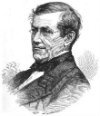 'Our readers will have learned with great regret the news of the death, in Paris, of Sir Charles Wheatstone, one of the greatest modern inventors.' So begins The Times' obituary of Wheatstone on October 22nd 1875 (p. 8), a few days after his death.
'Our readers will have learned with great regret the news of the death, in Paris, of Sir Charles Wheatstone, one of the greatest modern inventors.' So begins The Times' obituary of Wheatstone on October 22nd 1875 (p. 8), a few days after his death.
Given his work on telegraphy, the life of this 'greatest' of inventors plays an important role in our project, whilst at the same time we are interested in compression, brevity …
Scientific Apparatus Exhibition
King’s College, London contributed items from the Wheatstone
Bequest to an exhibition of 1876 designed to increase popular knowledge of
science. The Special Loan Collection of
Scienti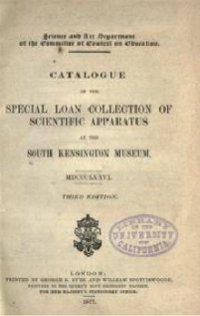 fic Apparatus was organised by the British Government under the aegis of
the South Kensington Museum. It was
called ‘vast and important’ by The
Popular Science Review.[i]
There was not sufficient space for the more than 4,500 exhibits at in the main
South Kensington Museum buildings so …
fic Apparatus was organised by the British Government under the aegis of
the South Kensington Museum. It was
called ‘vast and important’ by The
Popular Science Review.[i]
There was not sufficient space for the more than 4,500 exhibits at in the main
South Kensington Museum buildings so …
Wires across the Strand
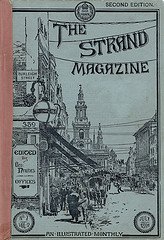 You know, of course, of The Strand Magazine's most famous contents: Arthur Conan Doyle's Sherlock Holmes stories, illustrated by Sidney Paget. This renowned association makes the Strand a familiar periodical to many readers today, but the Strand exceeds merely housing Holmes. It became a desirable site for short fiction by many writers; indeed from 1910 in England P.G. Wodehouse wrote stories exclusively for the Strand. [1] At the same time it offered fiction in translation, …
You know, of course, of The Strand Magazine's most famous contents: Arthur Conan Doyle's Sherlock Holmes stories, illustrated by Sidney Paget. This renowned association makes the Strand a familiar periodical to many readers today, but the Strand exceeds merely housing Holmes. It became a desirable site for short fiction by many writers; indeed from 1910 in England P.G. Wodehouse wrote stories exclusively for the Strand. [1] At the same time it offered fiction in translation, …
Junk mail: an unintended biography of Sir Charles Wheatstone
![]() The experience of working with a person’s private archive, their uncensored outpouring of thoughts, generally leaves the researcher feeling closer to the subject of study. There is a distinct notion of ‘getting to know you’. When leafing through papers, pattern recognition (that most human of traits) kicks in and the researcher goes about the largely unconscious business of harvesting fragments of the person from the scraps of text. As informative as they are ambiguous, elements …
The experience of working with a person’s private archive, their uncensored outpouring of thoughts, generally leaves the researcher feeling closer to the subject of study. There is a distinct notion of ‘getting to know you’. When leafing through papers, pattern recognition (that most human of traits) kicks in and the researcher goes about the largely unconscious business of harvesting fragments of the person from the scraps of text. As informative as they are ambiguous, elements …
The World does not get Smaller
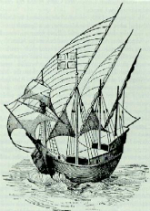 This Friday us lucky lot at Scrambled Messages held the first of our workshops. This one was on the subject of Space. In particular what do telegraphic technologies do to our understandings of space. There are lots of familiar old-adages of The World Gets Smaller variety. But really? Does it?
This Friday us lucky lot at Scrambled Messages held the first of our workshops. This one was on the subject of Space. In particular what do telegraphic technologies do to our understandings of space. There are lots of familiar old-adages of The World Gets Smaller variety. But really? Does it?
One of the texts we read and discussed in relation to this was an old-skool ANT piece by John Law (1986) about techniques of navigational …
Snail Mail
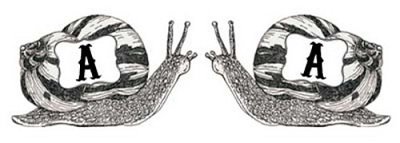 On the 26th October, 1850, the same year as the first Dover to Calais submarine cable, an article appeared on the front page of the French newspaper La Presse. The author, Jules Allix, reported with much excitement on an invention which he asserted would change the world (Allix, 1850). The invention was made by a Monsieur Jacques Toussaint Benoit and was for a method of instantaneous communication over distance without the use of wires. …
On the 26th October, 1850, the same year as the first Dover to Calais submarine cable, an article appeared on the front page of the French newspaper La Presse. The author, Jules Allix, reported with much excitement on an invention which he asserted would change the world (Allix, 1850). The invention was made by a Monsieur Jacques Toussaint Benoit and was for a method of instantaneous communication over distance without the use of wires. …

